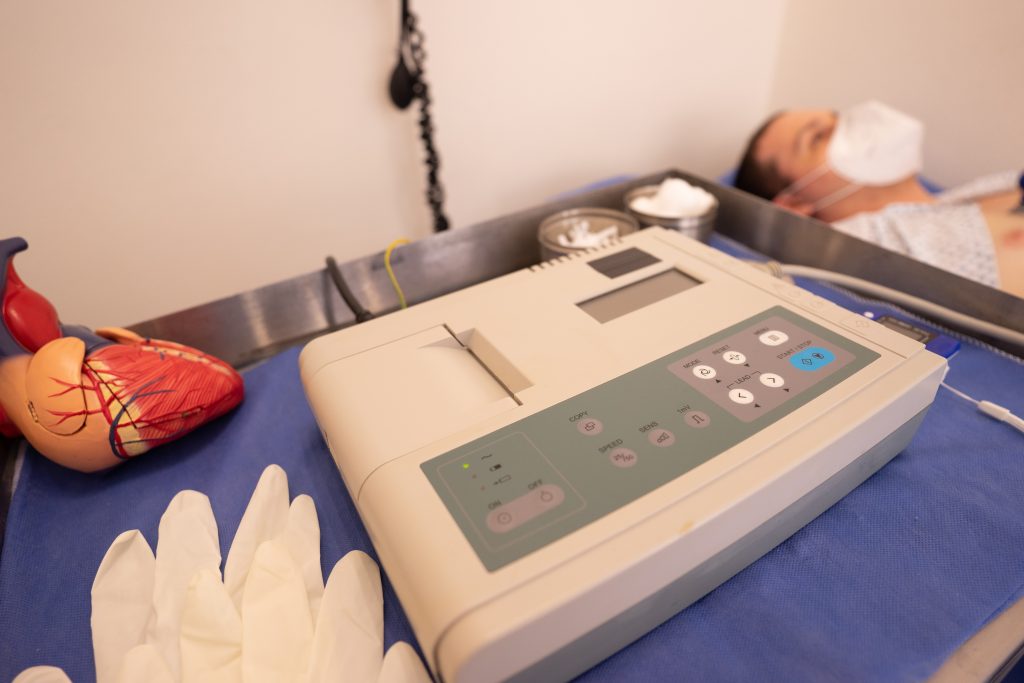Learn how practicing yoga can have a positive impact on heart health.
Discovering the Benefits of Yoga for Heart Disease
In today’s fast-paced world, heart disease has become a growing concern for many. But did you know that there is a holistic approach that can help alleviate the symptoms and improve the overall health of your heart? It’s called yoga, and its benefits for heart disease are truly remarkable. Let’s dive into the world of yoga and uncover how it can improve your heart health.
Understanding Heart Disease: Causes and Symptoms

Before we explore the benefits of yoga, it’s essential to understand what heart disease is and its common causes and symptoms. Heart disease refers to conditions that affect the heart’s structure or function, such as coronary artery disease or arrhythmias. Lifestyle factors like smoking, poor diet, lack of exercise, and stress play a significant role in its development.
Heart disease is a complex condition that affects millions of people worldwide. It is a leading cause of death and disability, making it crucial to educate ourselves about its causes and symptoms. By understanding the underlying factors that contribute to heart disease, we can take proactive steps to protect our heart health.
The Role of Lifestyle in Heart Disease
Your lifestyle choices can either contribute to heart disease or protect your heart health. So, it’s crucial to adopt healthy habits like maintaining a balanced diet, getting regular exercise, managing stress, and avoiding smoking.
A balanced diet rich in fruits, vegetables, whole grains, and lean proteins can provide essential nutrients that support heart health. Incorporating regular physical activity into your routine can help strengthen the heart muscle, improve circulation, and maintain a healthy weight. Managing stress through techniques like meditation, deep breathing exercises, or engaging in activities you enjoy can have a positive impact on your heart health.
Smoking, on the other hand, is a significant risk factor for heart disease. The chemicals in tobacco smoke can damage blood vessels, increase blood pressure, and reduce the amount of oxygen that reaches the heart. Quitting smoking is one of the most important steps you can take to reduce your risk of heart disease.
But did you know that incorporating yoga into your routine can amplify these positive effects? Yoga is a mind-body practice that combines physical postures, breathing exercises, and meditation. It has been shown to reduce stress, lower blood pressure, improve cardiovascular health, and enhance overall well-being. By adding yoga to your lifestyle, you can further enhance the benefits of a healthy diet, regular exercise, and stress management.
Common Symptoms of Heart Disease
Heart disease can manifest in various ways, including chest pain (angina), shortness of breath, fatigue, and rapid or irregular heartbeat. It’s important to be aware of these symptoms and consult with your healthcare provider if you experience any of them.
Chest pain or discomfort, also known as angina, is a common symptom of heart disease. It may feel like pressure, tightness, or a squeezing sensation in the chest. The pain may also radiate to the arms, shoulders, neck, jaw, or back. If you experience chest pain, it’s essential to seek medical attention promptly, as it could be a sign of a heart attack.
Shortness of breath is another symptom that can indicate heart disease. You may feel breathless even during light physical activity or at rest. This occurs when the heart is unable to pump enough oxygen-rich blood to meet the body’s demands. If you find yourself struggling to catch your breath, it’s important to consult with your healthcare provider for a proper evaluation.
Feeling fatigued or excessively tired, even after getting enough rest, can be a warning sign of heart disease. The heart’s inability to pump blood efficiently can lead to reduced energy levels and overall fatigue. If you constantly feel exhausted, it’s crucial to discuss this symptom with your healthcare provider.
Rapid or irregular heartbeat, also known as arrhythmia, is another common symptom of heart disease. You may experience a fluttering sensation in your chest or feel like your heart is racing or skipping beats. It’s important to monitor and report any irregularities in your heartbeat to your healthcare provider for further evaluation.
By being aware of these common symptoms, you can take prompt action and seek medical attention if necessary. Remember, early detection and intervention are key to managing heart disease effectively.
The Science Behind Yoga and Its Health Benefits
Yoga is more than just a series of physical poses; it is a holistic practice that combines breath control, meditation, and movement. This ancient discipline originated in India and has been widely recognized for its numerous health benefits.
When we engage in yoga, we are not only working on our physical bodies but also nurturing our mental and spiritual well-being. The philosophy of yoga encompasses these dimensions, teaching us to connect with our breath, be present in the moment, and cultivate inner peace. By integrating these principles into our lives, we can experience a profound transformation in our overall well-being.
The Philosophy of Yoga: A Brief Overview
Yoga is rooted in a rich philosophical tradition that dates back thousands of years. It draws inspiration from ancient texts such as the Yoga Sutras of Patanjali, which outline the principles and practices of this profound discipline. These texts delve into the nature of the mind, the concept of self-realization, and the path to liberation.
One of the fundamental principles of yoga is the belief that our physical bodies are interconnected with our mental and spiritual selves. Through the practice of asanas (physical poses), pranayama (breath control), and meditation, we can harmonize these aspects of our being, leading to a state of balance and inner harmony.
Yoga and Its Impact on Physical Health
Regular yoga practice offers a multitude of health benefits, extending beyond just physical fitness. While yoga certainly improves flexibility, strength, and balance, it goes beyond these superficial aspects of well-being. The practice of yoga also has a profound impact on our cardiovascular system, promoting heart health and overall vitality.
When we engage in yoga, we engage in deep breathing exercises that help oxygenate our bodies and improve blood circulation. This increased oxygen flow not only enhances our physical performance but also supports the health of our vital organs, including the heart. Additionally, the relaxation techniques practiced in yoga help reduce stress levels, which in turn can lower blood pressure and decrease the risk of heart disease.
Furthermore, yoga has been shown to have a positive impact on other aspects of physical health. It can help alleviate chronic pain, improve sleep quality, boost immune function, and enhance digestion. By engaging in regular yoga practice, we can cultivate a strong and resilient body that supports our overall well-being.
In conclusion, yoga is not just a physical exercise; it is a holistic practice that nurtures our mind, body, and spirit. Its profound impact on our physical health is backed by scientific research, highlighting its effectiveness in promoting cardiovascular health, flexibility, strength, and overall vitality. By incorporating yoga into our lives, we can experience the transformative power of this ancient practice and reap its numerous health benefits.
Yoga and Heart Health: A Deep Dive
Now that we’ve explored the fundamentals of yoga, let’s take a deep dive into its specifically tailored benefits for heart health.
Yoga practice helps improve heart health by reducing stress, lowering blood pressure, and increasing heart rate variability. It promotes relaxation, which in turn helps to reduce the workload on the heart and improve overall cardiovascular function. Additionally, the rhythmic breathing techniques in yoga increase lung capacity, oxygenating the blood and enhancing the efficiency of the heart.
But how exactly does yoga achieve these remarkable effects on heart health? Let’s delve into the details.
Stress Reduction: A Key Component
One of the primary ways yoga promotes heart health is through stress reduction. In today’s fast-paced world, stress has become a common companion for many individuals. Chronic stress can have detrimental effects on the cardiovascular system, leading to increased heart rate, elevated blood pressure, and a higher risk of heart disease.
Yoga provides a sanctuary from the chaos of everyday life, allowing individuals to find peace and tranquility on their mats. Through a combination of physical postures, breathing exercises, and meditation, yoga helps activate the body’s relaxation response. This response triggers a cascade of physiological changes, including a decrease in heart rate, blood pressure, and stress hormone levels.
By regularly practicing yoga, individuals can cultivate a sense of calm and balance, effectively reducing the burden on their hearts and improving their overall cardiovascular health.
The Power of Controlled Breathing
Another significant aspect of yoga’s impact on heart health lies in its emphasis on controlled breathing techniques. Yogic breathing, also known as pranayama, involves consciously manipulating the breath to achieve specific outcomes.
During yoga practice, individuals are encouraged to take slow, deep breaths, filling their lungs with fresh oxygen and exhaling fully. This deliberate breathing pattern not only helps calm the mind but also has a profound effect on the cardiovascular system.
As we inhale deeply, the lungs expand, allowing more oxygen to enter the bloodstream. This oxygen-rich blood is then pumped by the heart to various organs and tissues, nourishing them and supporting their optimal functioning. The controlled exhalation, on the other hand, helps eliminate carbon dioxide and other waste products from the body, ensuring a healthy exchange of gases in the lungs.
By practicing yogic breathing regularly, individuals can enhance their lung capacity, improve oxygenation of the blood, and boost the efficiency of their heart. This, in turn, contributes to better cardiovascular health and a reduced risk of heart disease.
Lowering Blood Pressure: The Yoga Connection
High blood pressure, also known as hypertension, is a significant risk factor for heart disease. It puts extra strain on the heart, increases the workload on the blood vessels, and can lead to serious complications if left uncontrolled.
Fortunately, studies have shown that practicing yoga regularly can help lower blood pressure levels and reduce the risk of hypertension-related complications. The combination of physical movement, breath control, and mindfulness in yoga helps induce a state of relaxation and calmness, which directly impacts blood pressure.
When we are stressed or anxious, our bodies release stress hormones such as cortisol and adrenaline, which can cause blood vessels to constrict and blood pressure to rise. However, through the practice of yoga, individuals can activate the body’s relaxation response, counteracting the effects of stress hormones and promoting a state of tranquility.
By incorporating yoga into their daily routine, individuals can effectively manage their blood pressure levels, improving their heart health and reducing the risk of cardiovascular diseases.
So, grab your yoga mat and embark on a journey towards a healthier heart. With its stress-reducing benefits, controlled breathing techniques, and positive impact on blood pressure, yoga is a powerful tool for promoting cardiovascular health.
Different Yoga Poses Beneficial for Heart Health
Now that we understand how yoga benefits the heart, it’s time to explore some specific poses that contribute to cardiovascular well-being.
Breathing Techniques for Heart Health
Deep breathing exercises, commonly known as pranayama, play a vital role in yoga practice. Techniques such as alternate nostril breathing and deep belly breathing help reduce stress, calm the mind, and regulate heart rate. Incorporating these techniques into your yoga routine can have a profound impact on your heart health.
Restorative Yoga Poses for Heart Patients
For those who have experienced heart disease or are recovering from a cardiac event, restorative yoga poses provide gentle movement and relaxation. Poses like Legs-Up-The-Wall and Supported Bridge are known to promote circulation, relieve stress, and encourage overall heart health.
Incorporating Yoga into Your Daily Routine
So, you’re ready to embark on your yoga journey for heart health? Here are some tips to help you get started.

Tips for Beginners Starting Yoga
Starting anything new can be intimidating, but don’t worry, we’ve got your back! Find a qualified yoga instructor who specializes in heart health, start slowly, and listen to your body. Consistency and patience are key, so don’t be discouraged if you can’t perfect that pretzel pose right away!
Maintaining Consistency in Your Yoga Practice
To reap the full benefits of yoga, consistency is essential. Establish a regular routine that works for you, whether it’s carving out dedicated time each day or attending a yoga class a few times a week. Remember, every step you take towards caring for your heart counts!
Now that you know the incredible benefits of yoga for heart disease, it’s time to roll out your mat and embark on this journey towards better heart health. Explore the numerous yoga poses, breathing techniques, and mindfulness exercises that can transform your life. Discover the power of yoga and let it guide you towards a happier and healthier heart!







